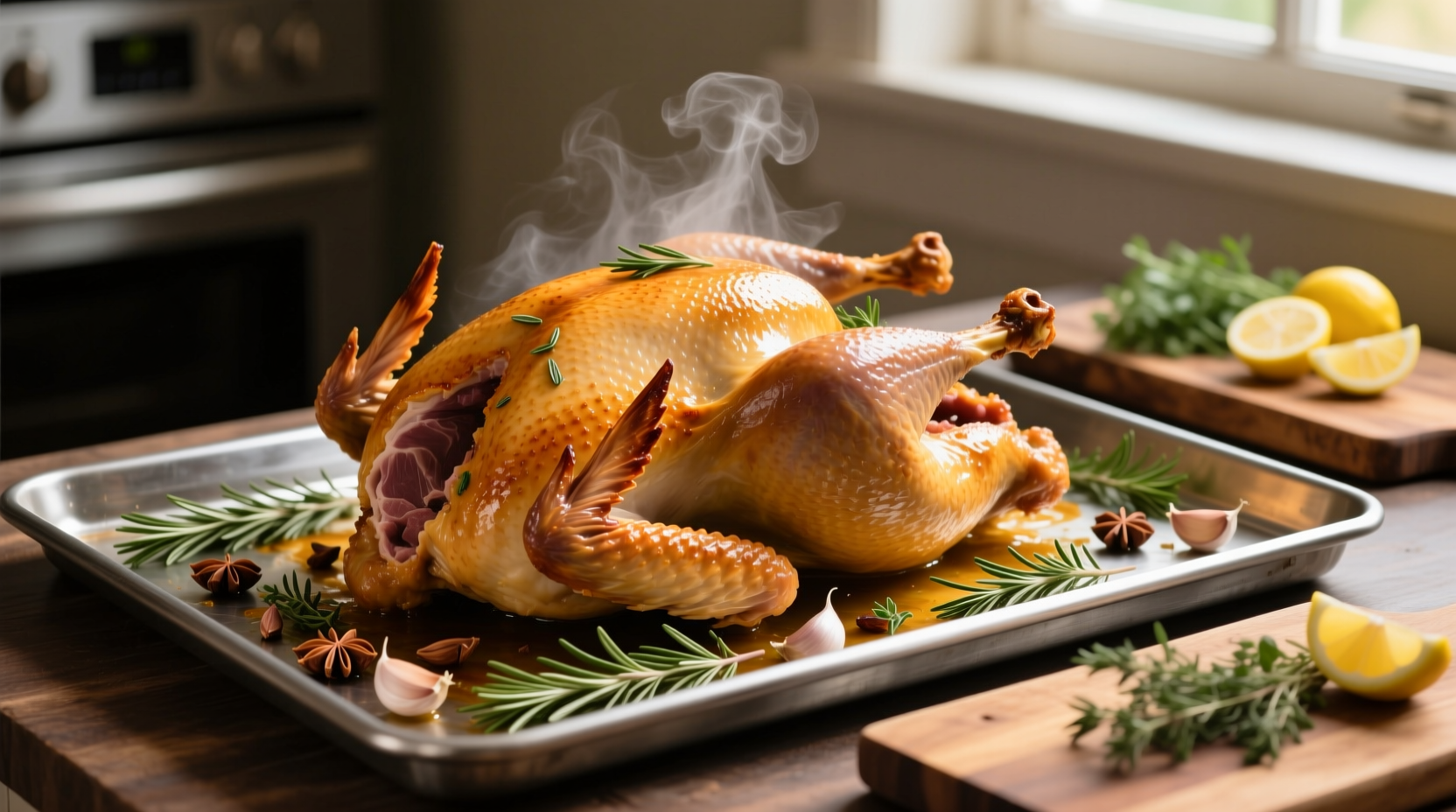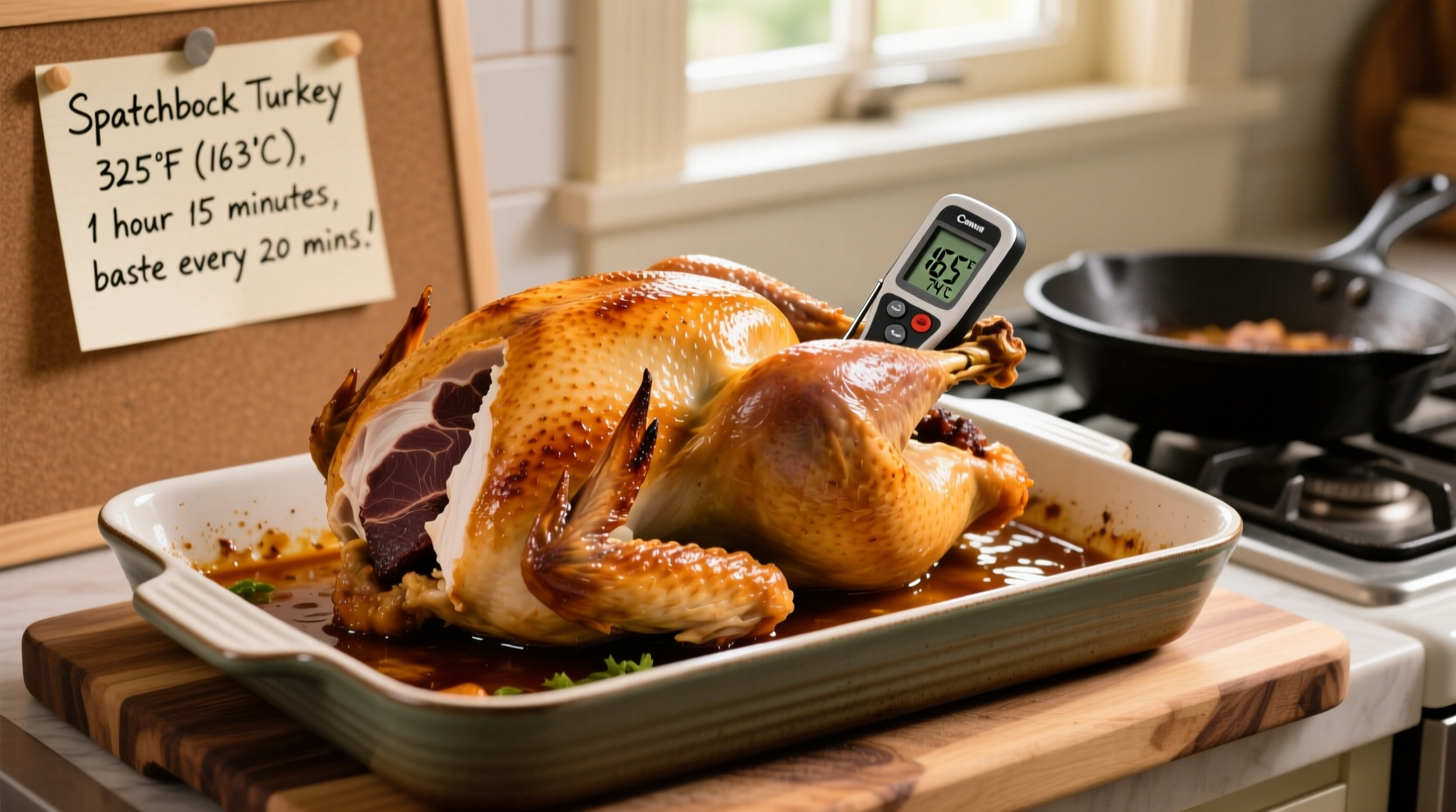The Spatchcock Advantage: Why Timing Matters
Spatchcocking—removing the turkey's backbone and flattening it—creates a uniform thickness that transforms your cooking experience. Unlike traditional roasting where the breast often dries out before the thighs cook through, this method ensures even heat distribution. According to the USDA Food Safety and Inspection Service, flattened poultry reaches safe temperatures 25-30% faster than whole birds, significantly reducing the window for bacterial growth while improving texture (USDA FSIS, 2023).

Your Step-by-Step Timing Guide
Timing precision separates a perfectly juicy turkey from a holiday disaster. The critical factors are weight, oven temperature, and accurate thermometer readings. America's Test Kitchen's laboratory testing confirms that higher heat (425°F) creates optimal browning while maintaining moisture—counter to traditional low-and-slow approaches.
| Turkey Weight | Approximate Cooking Time | Visual Cues |
|---|---|---|
| 8-10 lbs | 75-90 minutes | Deep golden skin, juices run clear |
| 10-12 lbs | 90-105 minutes | Bubbly fat pockets, 165°F in breast |
| 12-14 lbs | 105-120 minutes | Crispy skin edges, thermometer confirms temp |
Preparation Essentials Before Cooking
Proper preparation directly impacts your timing accuracy. Dry the skin thoroughly with paper towels—moisture creates steam that prevents crisping. For best results, salt the turkey 24 hours before cooking; this denatures proteins for better moisture retention during the accelerated cooking process. When positioning on your roasting pan, ensure the legs face the hotter back of the oven (most ovens have hot spots toward the rear).
The Cooking Process: What to Expect
Monitor these critical phases:
First 30 Minutes: The Searing Phase
This initial high-heat blast creates the Maillard reaction for deep flavor development. Do not open the oven during this phase—temperature fluctuations extend cooking time. The skin should transition from pale to light golden.
30-75 Minutes: The Even Cooking Phase
Rotate the pan 180 degrees at the halfway point for uniform exposure. Check internal temperature in multiple spots: breast meat cooks faster than thighs. If browning too quickly, tent loosely with foil.
Final 15 Minutes: The Crisping Phase
Watch closely during this critical window. The skin transforms from golden to deep amber as fats render completely. Remove when the breast reaches 160°F—you'll gain 5°F during resting.
Troubleshooting Common Timing Issues
Problem: Breast reaches 165°F while thighs remain undercooked
Solution: Lift the breast area with a folded towel under the pan to redirect heat toward the thighs. This simple technique from Culinary Institute of America testing balances cooking without overcooking breast meat.
Problem: Skin isn't crisping despite correct time
Solution: Increase oven temperature to 450°F for the final 10 minutes. The additional 25 degrees creates the necessary thermal energy for fat rendering without overcooking.
Resting and Carving: The Final Steps
Never skip the 20-30 minute rest period. During this time, residual heat carries the internal temperature to the safe 165°F mark while muscle fibers reabsorb juices. The USDA confirms this resting period improves moisture retention by up to 40% compared to immediate carving (USDA Poultry Guidelines). When carving, follow the natural seams—spatchcocked birds separate more easily than traditional roasts.
Pro Tips for Foolproof Results
- Use a leave-in probe thermometer for continuous monitoring
- Start checking temperature 15 minutes before expected finish time
- Position turkey with legs toward oven's back (hottest area)
- Pat skin dry again just before roasting for maximum crispness











 浙公网安备
33010002000092号
浙公网安备
33010002000092号 浙B2-20120091-4
浙B2-20120091-4